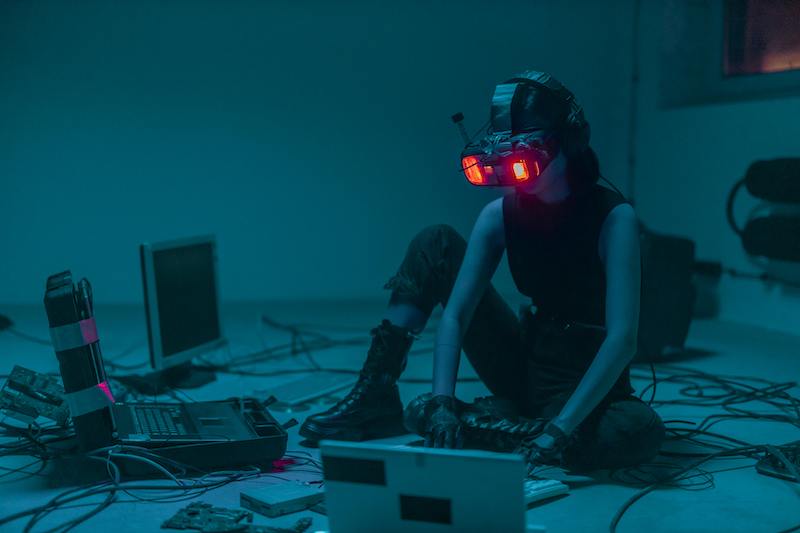
There’s something magical about the right voice.
It can draw you in, spark emotion, and make a message unforgettable. But here’s the thing. Finding that perfect voice used to be tricky (and expensive). You’d need the right talent, in the right place, at the right time.
Now, AI is flipping the script. In just a few clicks, you can generate voices that sound warm, authoritative, playful (or anything in between), without booking a studio or wrangling a schedule.
This isn’t just a convenience; rather, it’s a creative game-changer. Let’s break down why AI voice technology isn’t just “nice to have” anymore, but something modern creators and businesses genuinely need.
What is AI voice technology?
AI voice technology refers to software systems that can generate, understand, and replicate human-like speech using artificial intelligence. At its core, it relies on deep learning models trained on massive datasets of voices, languages, and accents.
These systems can now do much more than just read text out loud. They now interpret tone, inflection, and even emotion to produce speech that feels natural and engaging. You’ve probably interacted with AI voice technology without realizing it.
Examples include virtual assistants like Siri or Alexa, automated customer support, or even video narrations on social media.
What makes modern AI voice tools different is how realistic and customizable they’ve become. From mimicking specific accents to adjusting pacing and emphasis, creators can tailor voices to match their brand, audience, or story.
You get all this without the need for a professional voice actor every single time. Advantages of using AI Voice AI voice’s impact spans across speed, cost, creativity, accessibility, and brand consistency, making it a game-changer for businesses and creators alike.
Speed and efficiency
One of the biggest advantages of AI voice technology is how fast it works. Traditionally, producing a high-quality voiceover meant scheduling recording sessions, hiring voice actors, and going through rounds of edits.
That process could take days or even weeks. With AI voice, creators can generate polished narrations in minutes.
Need to tweak a line?
Instead of calling back the actor and re-recording, you simply edit the script and regenerate the audio instantly. This makes AI voice an incredibly powerful tool for industries that rely on quick turnarounds.
For instance, marketing teams creating ad campaigns, educators producing e-learning modules, or content creators publishing videos daily.
Cost savings
Another clear advantage of AI voice generator technology is the money it saves. Traditional voiceover production isn’t cheap. Between hiring professional voice actors, booking studio time, and paying for editing, costs can add up quickly.
For small businesses, startups, or solo creators, those expenses often put professional-grade voiceovers out of reach. AI voice changes the equation. With a one-time subscription or pay-per-use model, creators can access a wide range of realistic voices without the recurring costs of human talent or studio sessions. This makes it possible to produce high-quality audio content on even the tightest budgets.
Creative flexibility and customization
AI voice technology doesn’t just save time and money. It also opens the door to creative flexibility. Need a warm, friendly tone for an explainer video? Or a bold, authoritative voice for an ad campaign?
With AI tools, you can instantly switch styles, accents, pacing, and even emotions without going back to the studio. This customization means brands and creators aren’t boxed into one “voice.” Instead, they can experiment and adapt based on audience, platform, or campaign goals.
For example, a brand could use one voice for TikTok videos, another for podcasts, and yet another for international audiences. All generated quickly from the same script.
Accessibility and inclusivity
Another underrated benefit of AI voice technology is how it fosters inclusivity. Traditional voiceovers may not always cater to diverse languages, dialects, or accessibility needs. AI, on the other hand, can generate speech in multiple languages, provide accurate pronunciation, and even adjust tone for clarity.
For audiences with visual impairments, AI-powered narration makes content more accessible by turning text into natural-sounding audio. Likewise, educational platforms can use AI voices to break language barriers and reach learners worldwide.
Consistency across projects
One of the toughest challenges in content production is maintaining consistency. A human voice actor may not always deliver the exact same tone or pacing across different sessions. But with AI voices, consistency is guaranteed.
The same script, fed into the same system, produces the same quality every single time. This is especially valuable for brands that rely on strong, recognizable audio identities. Think of training modules, product demos, or customer support bots.
With AI, you can maintain a uniform voice across all touchpoints, from a YouTube ad to a mobile app tutorial.
Ethical considerations and responsible use
Like any powerful tool, AI voice comes with responsibilities. Transparency is key. Misuse, such as creating misleading content or deepfakes, can erode trust and credibility.
Responsible adoption means setting clear boundaries, respecting intellectual property, and ensuring voices aren’t used in ways that harm individuals or communities. When guided by ethics, AI voice remains a force for innovation rather than manipulation.
Final thoughts
AI voice isn’t here to push human creativity aside. In fact, it’s here to amplify it. Think of it as a partner that takes care of the repetitive, time-consuming tasks, while you focus on storytelling, strategy, and emotional impact.
The best results come when technology and creativity work hand in hand. By embracing AI voice as a collaborative tool, creators and businesses can produce content that’s faster, smarter, and more engaging without losing the human touch that makes it truly resonate.



